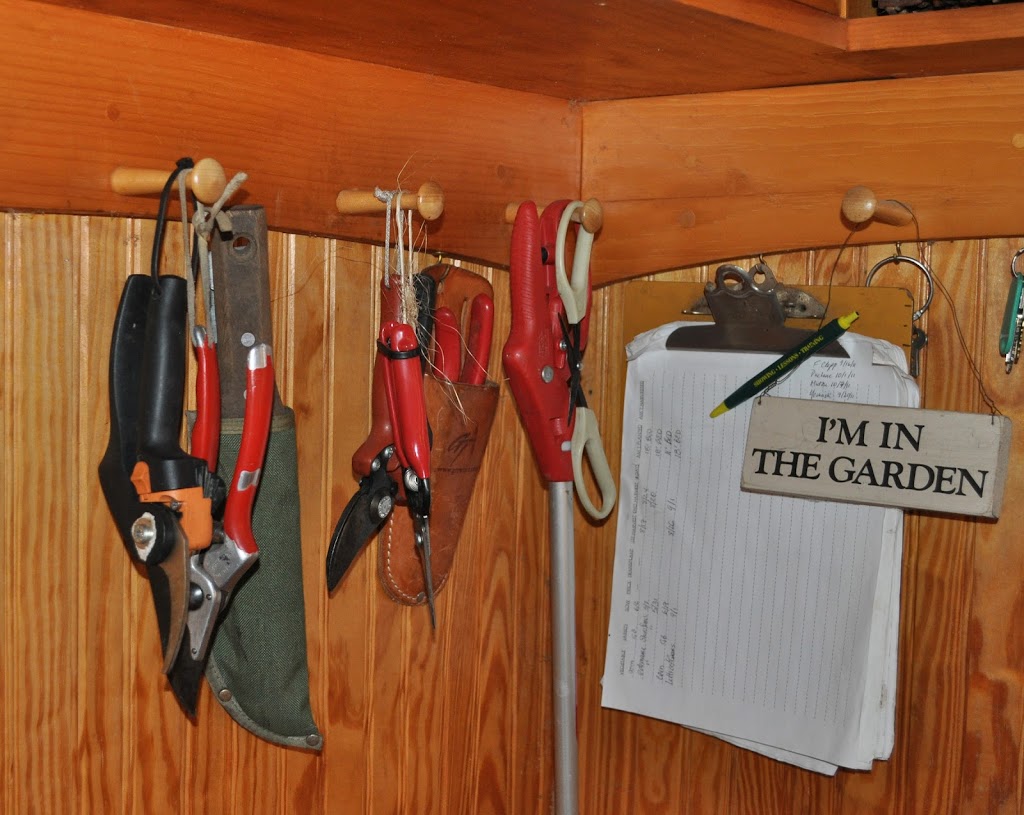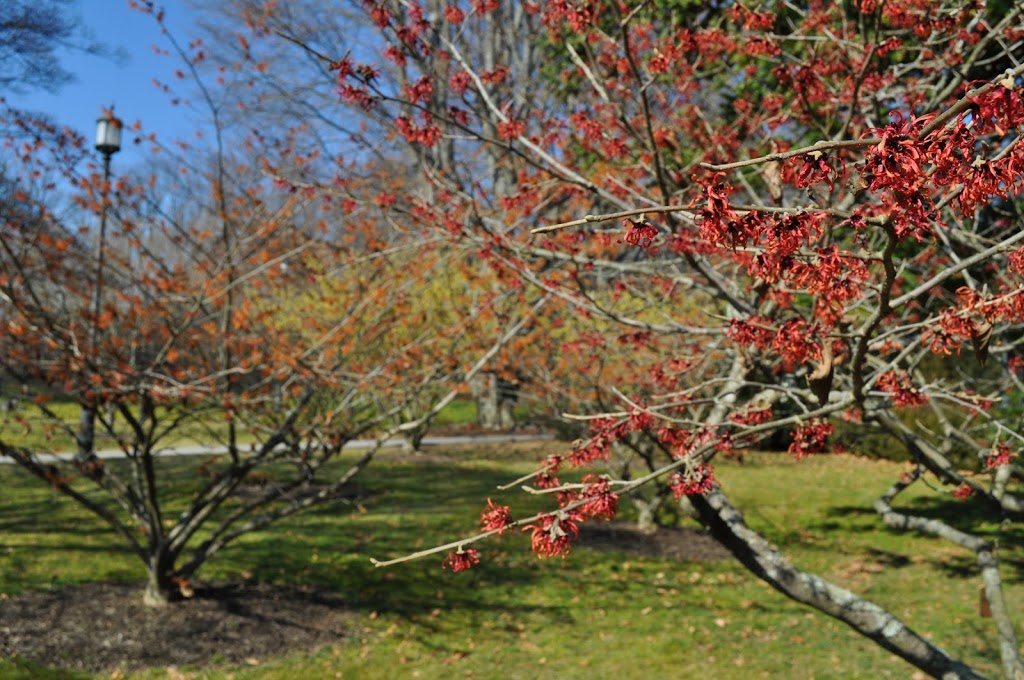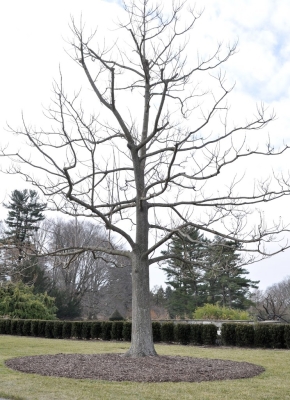SEED LONGEVITY
/1 Comment/in Gardening/by Lee A. ReichWatching tiny, green leaves push up through the soil never ceases to amaze me, even after watching it happen for decades. And it’s all the more amazing with certain seeds, such as onions. It must be that I was scarred years ago by having a difficult time getting them to germinate. Well, I sowed them in the greenhouse a couple of weeks ago and they’re up and growing strongly. Most of them, at least.
My failure with onions years ago was due to old seed, and old for onion seed means anything more than a year old. Lettuce seed, in contrast, is one of the longest-lived of vegetable seeds and keeps up to 6 years. Here’s the life expectancy for other common vegetable seeds: 5 years for cucumber, endive, muskmelon, and radish; 4 years for beet, Brussels sprouts, cabbage, chard, eggplant, kale, mustard, pumpkin, tomato, turnip, and watermelon; 3 years for bean, broccoli, carrot, Chinese cabbage, pea, and spinach; 2 years for sweet corn, leek, okra, and pepper; and, along with onion, 1 year for parsley and parsnip. Under poor storage conditions — moist and warm, like my garage in summer — longevity is decreased.
Still, it seemed like such a shame to throw away good onion seed only a year old. So, in the seed flat a couple of weeks ago, a sowed one row of one-year-old onion seed alongside the rows of fresh onion seeds (and one row of leeks).
Confirmed: onion seed isn’t worth sowing after one year. In the seed flat are five neat rows of narrow, green sprouts and one barren row.
——————————————————–
Few seeds have as short a life as onion. More astounding is the longevity of some seeds, such as the 10,000 year old lupine seed that germinated after being taken out of a leming burrow in the Yukon permafrost. Just think: This same species was up and growing when humans first crossed the Bering Land Bridge, and saber-toothed cats and woolly mammoths may have brushed up against its leaves. Except that the story of the 10,000 year old lupine seed turned out to be apocryphal, as confirmed by radiocarbon dating.
The record for seed longevity is, in fact, 2,000 years and held by a date palm grown from seed recovered from an ancient fortress in Israel. But a recent discovery, once confirmed, will break that record by a long shot.
A kind of campion seed (Silene stenophylla) found buried, this time in a squirrel burrow, in Siberian tundra could very well be 32,000 years old. The seed has been grown into a charming, white-flowered plant.
Some coaxing was needed to get that original, 32,000 year old seed to sprout. A few cells, removed from the placenta, were grown under sterile conditions on a specially concocted growth medium. Once cells had multiplied sufficiently, the growing medium was altered to induce leaves, stems, and roots, and eventually the plants were robust enough to be planted in soil. The plant flowered and set seed, which germinated readily to produce more seedlings.
I wonder what seed has the shortest longevity. It’s not onion. Seeds in the family Tillandsioideae, related to pineapple, probably hold the record, with a viability of 4-6 weeks.
————————————————————–
Longwood Revisited
/1 Comment/in Gardening/by Lee A. ReichWitchhazel blossoms on February 5th! Not here, but down in Longwood Gardens in Kennett Square, PA, a public botanical and pleasure garden around which I had some time to wander before giving a lecture. One little grove was particularly fragrant and comely, with a few witchhazels shrubs with yellow blossoms, some with bright orange blossoms, and some with brownish orange blossoms.
February 5th is early for witchhazel even down there, reflecting what has been the mildest winter in memory. While many people prefer mild winters, this weather worries a lot of gardeners. Are plants going to become “soft?” Is possible cold weather in the weeks ahead going to do them in?
Call me a pollyanna, but I have a lot of faith in Mother Nature (or, put another way, natural systems) to adapt and protect against calamities. Not that everything will necessarily keep chugging along the way we humans like it, but that forests will remain forests, perhaps with some changes in species, and that garden plants should, in general, survive.
A few odd things are going on this winter here in the Northeast and over much of the rest of the country. First is the mild temperatures. People worry that plants might begin to grow too soon. But today’s and tomorrow’s temperatures aren’t the only things that shake plants awake this time of year. Daylength also comes into play, and no matter what the winter is like, daylength is the same on any given date from year to year.
Temperatures over the past weeks and months also come into play: Plants won’t begin growth until they’ve experienced a certain number of hours of cool — not cold — temperatures, signaling for them that winter is over and it’s safe to grow. Some winters, those hours begin to accumulate in autumn and then finish accumulating in late winter, when temperatures turn cool, not frigid, again. In the South and perhaps this far north, this winter at least, those hours could have accumulated sufficiently through winter to cause an early awakening of plants.
The first sign that many trees and shrubs show of awakening is the appearance of their flowers. These early blossoms could, in fact, succumb to subsequent cold weather. That cold could snuff out developing fruits, snuffing out this year’s crop. Or that cold weather could turn, say, an early tulip blossom from a handsome red cup to a wet dishrag on a stalk. In either case, the plants themselves, except for the blossoms and fruits should not be harmed.
The second odd thing about this winter is the lack of snow cover. Snow reflects light and heat from winter sun. Evergreens don’t like this at a time when their roots are cold and not especially active. The result is scorched leaves. Bark also can scorch, except this time it’s called scalding, when winter sun heats up dark bark by day and then bark temperatures plummet as the sun drops below the horizon.
On the plus side, snow is a great insulator. It helps modulate soil temperatures to minimize alternate freezing and thawing, which can heave plants up and out of the soil. Heaving is especially a problem with young or new plants, as yet hardly rooted. That insulating, white blanket also lessens roots’ exposure to cold. Without snow, less cold-hardy plants (and we gardeners are always pushing the limits) might show more winter damage.
Then again, snow isn’t the only insulator. Any good gardener mulches plants to provide nutrients, to conserve water, to build up humus, and to feed beneficial soil life. I’m banking on those layers of wood chips, leaves, straw, and other organic materials I spread through autumn to protect my roots — plants’ roots, that is.
————————————————————–
No question about it: Temperatures, on average, have warmed in recent years. Plants are responding. But how? Trees, for example.
To help answer such questions, the Smithsonian Institute recently began a citizen science program to track tree growth throughout the world. The way it works is that, after signing up to become a “citizen scientist,” you’re sent a tree banding kit along with instructions for attaching the tree band, selecting study trees, and gathering and reporting data. Information, including a video, is available at https://treebanding.si.edu.
It’s all free, it’s all interesting, and your data, along with that of citizen scientists worldwide, will help us better understand tree growth, and what’s affecting it, over the years.
————————————————————–
Turning my thoughts back to Kennett Square and Longwood Gardens . . . I’m jealous. Not of their awesome, main conservatory fragrant with citrus trees and lilies in bloom. (I have a small greenhouse, and a kumquat, a citrus relative, that blooms in summer.) Not of their small greenhouse that is home to espaliered peach and nectarine trees and to a dozen or so potted fig trees. (Three fig trees grow in my greenhouse.) Not of their grove of witchhazels in various shades of yellows and reds. (I have one yellow witchhazel.)
What I am jealous of is the care that each of their plants receive; each one is perfect. If an old leaf or spent flower drops on the ground, someone picks it up. Each stem of their peach and nectarine espaliers is tied neatly to its trellis, as are the high vines clambering up pillars in the greenhouse. Outdoors, each tree is pruned to perfection, with none of their branches crowding, with any diseased or dead limbs lopped off cleanly. Looking closely enough, I did, at least, see some evidence of scale insects on their large potted grapefruit plants in the conservatory. (My large potted bay laurel also shows evidence of scale.)
My gardens, indoors and out, would be much improved with their knowledgeable crew of helpers.
ADMIRING THE GARDEN, NOW? & COLD PLANS
/4 Comments/in Gardening/by Lee A. Reich See previous post, below, about my new book, just out!! GROW FRUIT NATURALLY: A HANDS-ON GUIDE TO LUSCIOUS, HOMEGROWN FRUIT.
——————————————————-
Every time I walk out the back door on the way to the greenhouse, chicken coop, or compost pile, I take a look at my vegetable gardens. No, I’m not checking out what’s growing. Nothing’ growing, except for a few stalks of kale and some green tufts of mâche.
My real interest is how the vegetable garden looks, now, in midwinter. Too many people plant their vegetables in “vegetable prisons:” undersized gardens with oversized fencing relegated to a distant corner of the yard.
A vegetable garden needn’t be an eyesore, even in winter when nothing is growing in it. Consider the fence, which endures year ‘round. How about white pickets, rustic cedar or locust, or fanciful arches of rebar filled in with mesh? And no need to segregate plants, banning ornamentals from the vegetable garden. How about dwarf boxwood as accent or edging within the garden and shrubs outside the fence to soften its transition to lawn? How about some cover crops in the vegetable beds for a verdant cover, turned tawny this time of year, which also improves the soil? How about an arching arbor as an invitation to enter the garden, the arbor perhaps dressed up with clematis, whose fuzzy seedheads persist long after the flowers fade.
Once a vegetable garden becomes inviting, there’s no longer the need to relegate it to that distant corner of the yard. Move it closer to the house or, even better, the back door or, better still, right against the house, linked to it with eyes and feet. (Brick house, brick paths; white clapboard house, white picket fencing; etc.) Now you have a garden that not only looks prettier, but one that also will get more care and use because of its proximity and visual draw, ad looks good even in winter.
—————————————————-
My two vegetable gardens are hardly eyesores, but as I look upon them now, I see that they could be prettier. And one of them could be even closer to the house. (It’s now about 25 feet distant.)
I originally rented my house and the closer vegetable garden still stands where the original one was once differentiated from the then-weedy, tall grassy field by a rickety chicken-wire fence. The fence has been re-built twice, most recently with locust posts and cross-pieces, and welded wire fencing. I have dressed up its outside perimeter with billowing outpourings of trees and shrubs, including some red currant bushes which ripen tasty, brightly-colored, jeweled fruits in early summer, and a cornelian cherry tree, also with tasty, bright red fruits later in summer. In a month and a half, that cornelian cherry tree will be showered in yellow blossoms. (More on all this in my book Landscaping with Fruit.)
Although I am loathe to move the vegetable garden, with its 30 years of compost-enriched soil, closer to the house physically, I have attempted to do so visually with a series of gateways and arches. Standing in my kitchen and looking out a glass, sliding door towards the garden carries your eyes under the grape arbor over the terrace attached to the house, across a small patch of lawn, and thence through a rustic, locust arbor into the garden. The path through the garden carries you further, across the garden and then out through another arbor, the path extending into a berry patch. Further along, that path ends in yet another, arbor, this one simpler, and finally outside the planted areas to a short path that meanders mysteriously out of sight into a patch of bamboo.
Still, my landscape seems too disjunct. The gardens aren’t sufficiently tied to each other or to the surrounding landscape and house.
The vegetable garden also is now too gray and brown. The evergreen white cedars, boxwoods, and Meserve hollies around and near the gardens cheer and warm up the landscape, but more is needed.
————————————————-
The traditionally coldest part of winter is past and it hasn’t been very cold, so I may risk expanding the outdoor evergreen palette, which is somewhat limited this far north. Temperatures did drop to about 5°F a few weeks ago, but nighttime lows at the end of January were only in the 20s, nothing like the lows of minus 25° experienced many years ago.
The USDA, recognizing the shift to warmer winter temperatures, recently updated their cold hardiness zone map, available at http://planthardiness.ars.usda.gov/PHZMWeb/. Wavy lines overrunning this map bracket each zone, from 1 through 11, delineating the average annual minimum temperature within each zone. (My garden, over the years, has been re-classified from 4b to 5b.) Nursery catalogs and tags on plants in local nurseries spell out, among other bits of information, the hardiness zone limits for specific plants and varieties.
Helping me out on my search for new evergreens will be Michael Dirr’s new book, Encyclopedia of Trees & Shrubs, a weighty and informative tome in all respects. In a few years, with continued warming, I may try planting two southern evergreens that I long for here in the north: southern magnolia and camellia.









